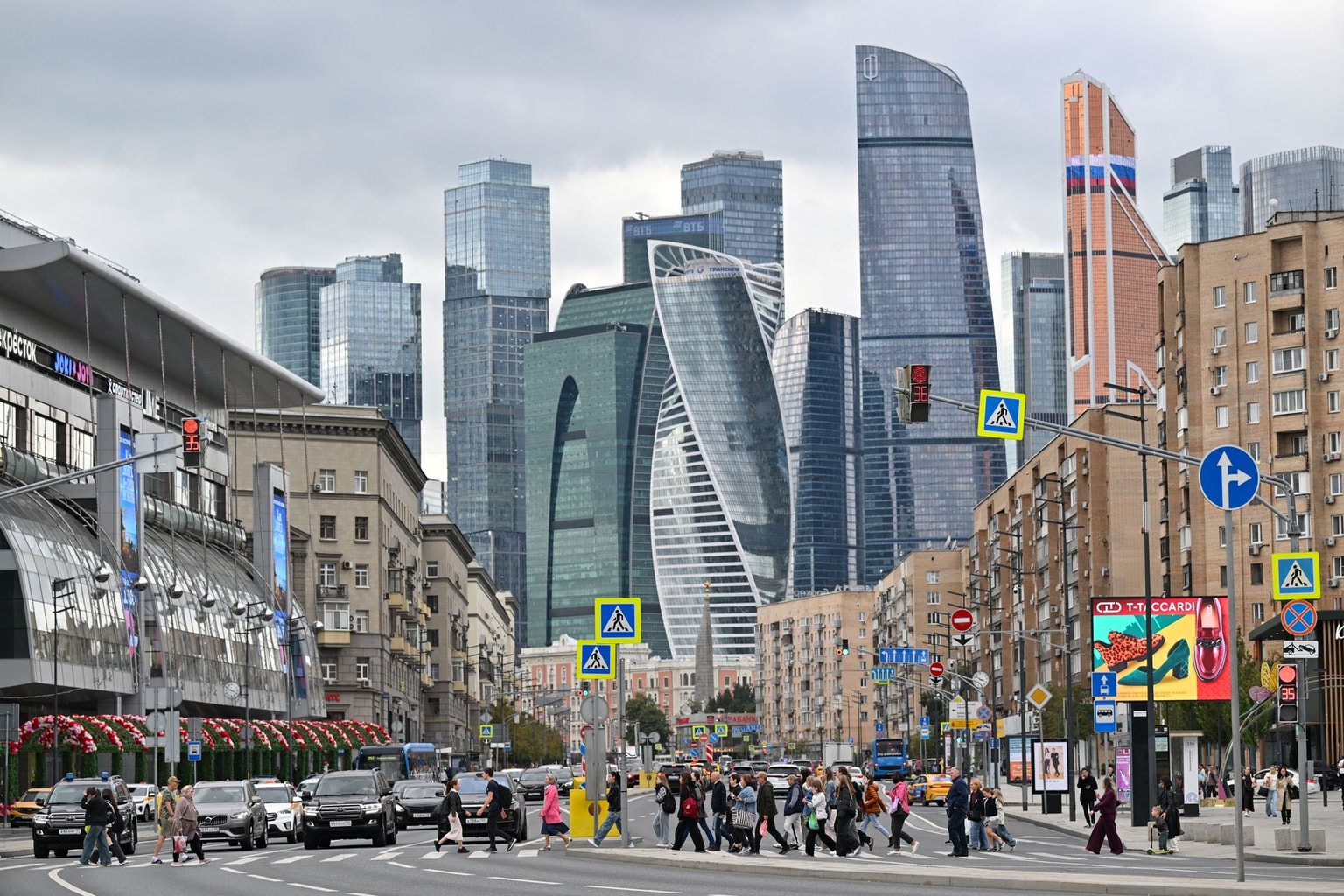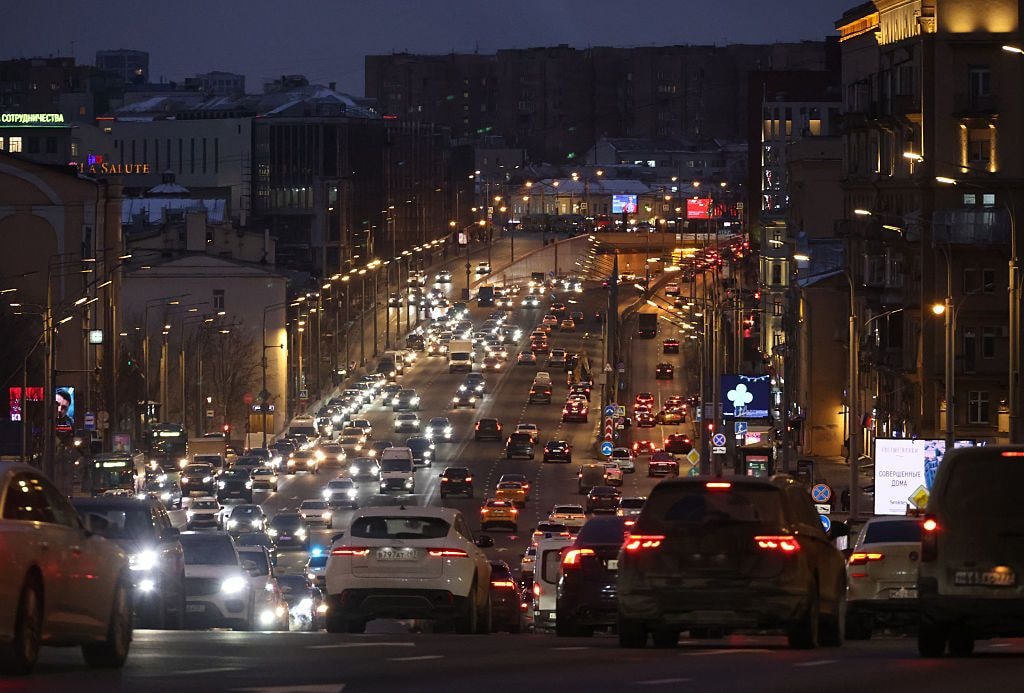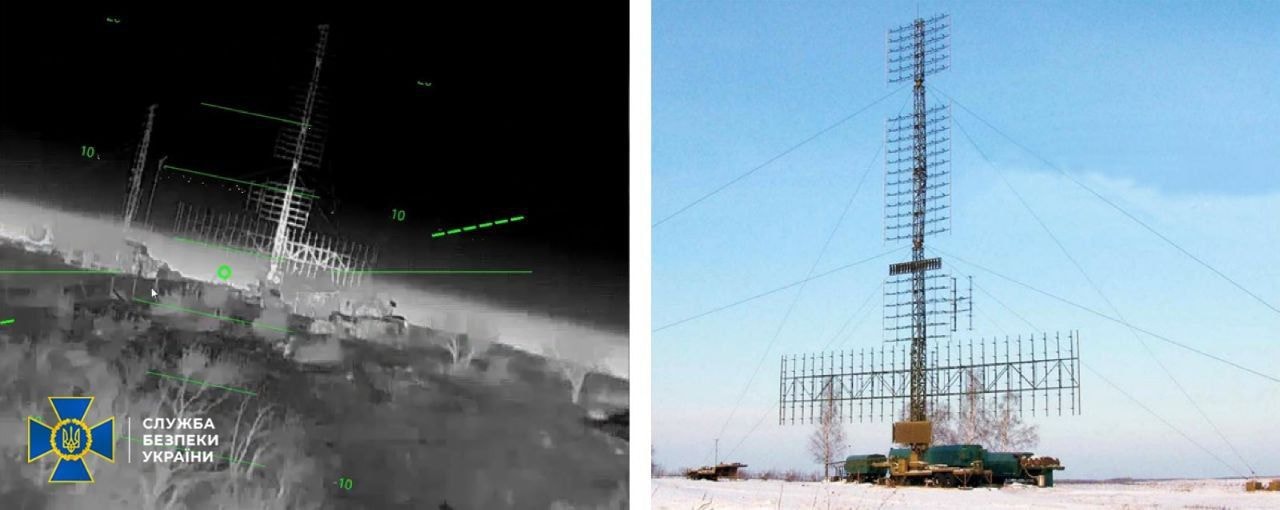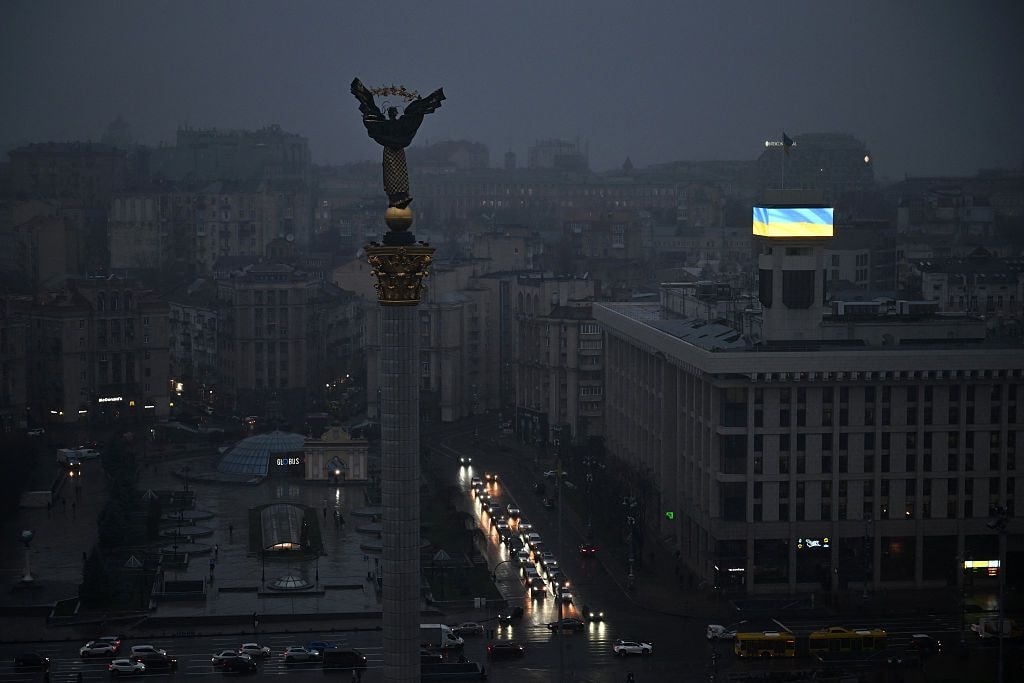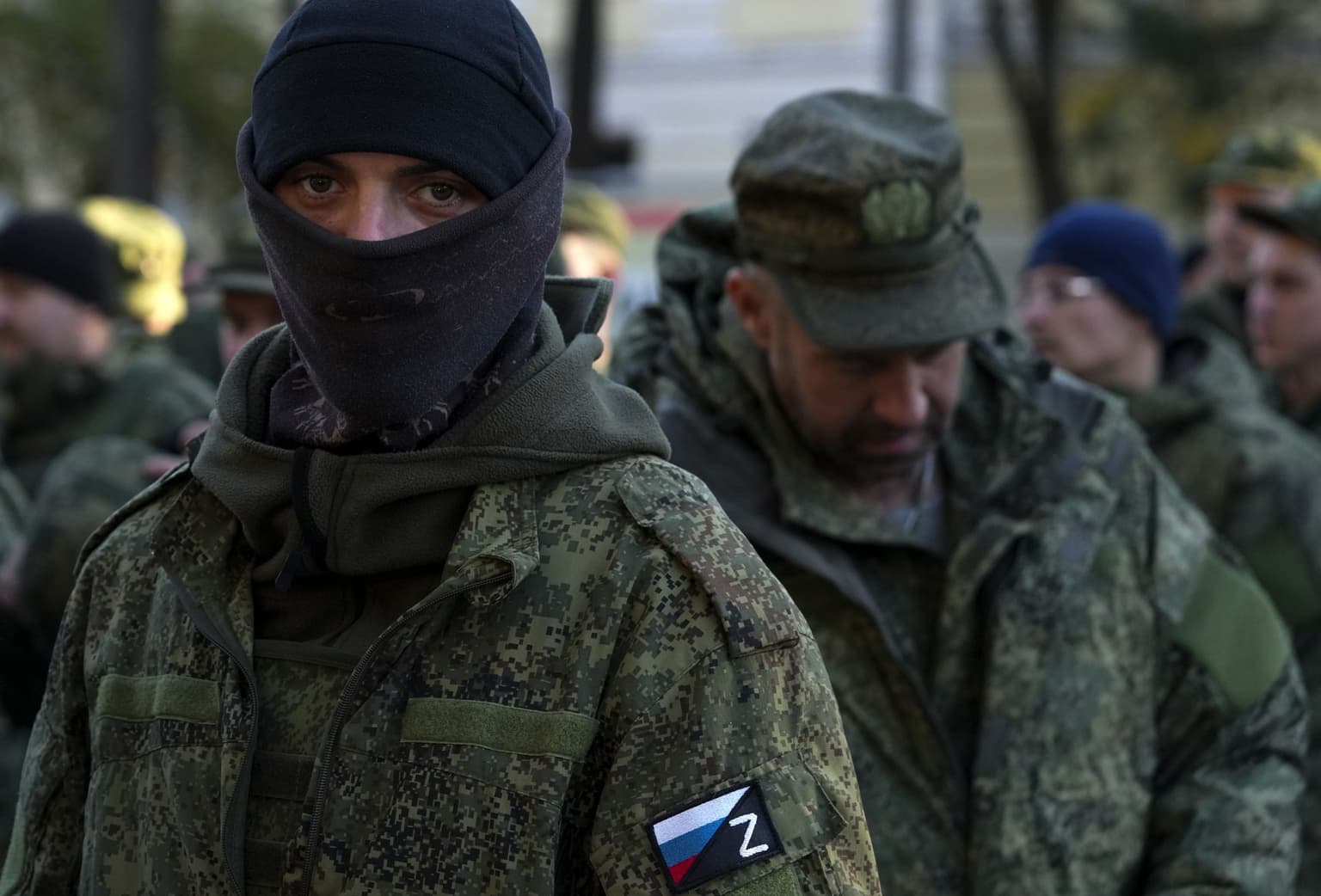
No, Russian soldiers in Ukraine are not being forced to fight against their will
Russian citizens drafted during the partial mobilization following a military call-up for the Russian invasion of Ukraine in Moscow, Russia, on Oct. 10, 2022. (Stringer / Anadolu Agency via Getty Images)
The misconception that Russian soldiers are forced to fight against their will in Ukraine is one that reaches even into the highest echelons of the U.S. government.
Earlier this year, U.S. President Donald Trump repeatedly lamented the deaths of soldiers on both sides, seemingly equating their suffering and the circumstances under which they found themselves in the trenches.
"Every day people are dying. Young handsome soldiers are being killed. Young men, like my sons. On both sides. All over the battlefield," he said in February.
"Young, young, beautiful people. They’re like your kids, two million of them — and for no reason."
But this sentiment ignores one important fact — most Russian soldiers fighting in Ukraine chose to do so, and did so not for values, but for cold, hard cash.
“Many think that the Russians are forced to fight. In fact, the Kremlin is afraid of mobilizing its people,” Kateryna Stepanenko, Russia research fellow at the Institute for the Study of War, told the Kyiv Independent.
Instead, Russian President Vladimir Putin relies on paying vast sums of money in order to entice people to sign up voluntarily, which they continue to do so in droves — up to 40,000 a month according to NATO estimates from August.
"The moral equivalence of these two armies is impossible," Pavel Luzin, an independent Russian military analyst, told the Kyiv Independent.
"Russia’s side is completely immoral, and the vast majority of its soldiers went to war voluntarily — driven by financial and psychological interests, not by coercion.
“One side is an occupying force trying to subjugate another country and its people. The other is fighting for its freedom. These are fundamentally different causes."
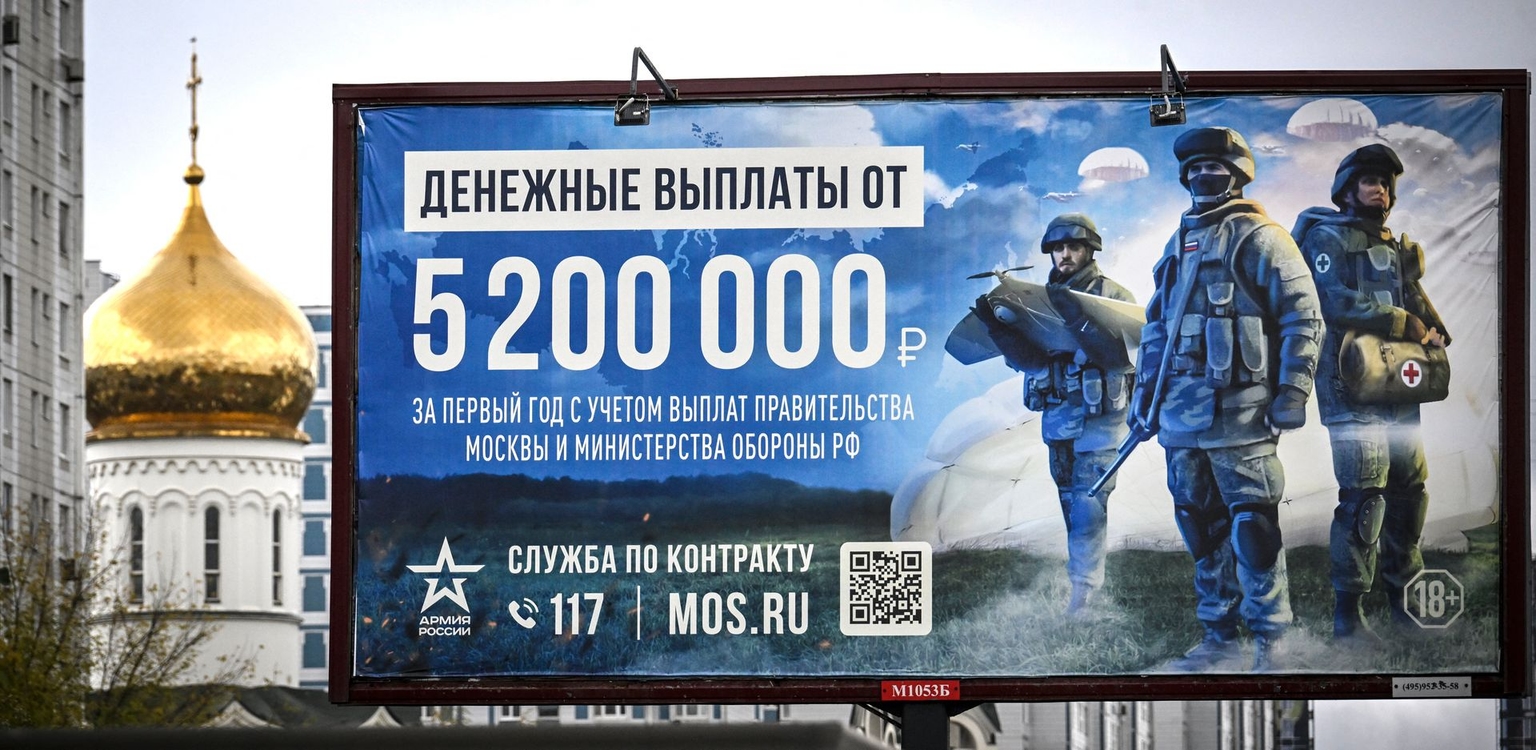
Russia's two armies
Russia effectively operates with two armies — a conscript army and a contract army.
The conscript army is the standing force used to defend Russia itself. The Kremlin conducts conscription twice a year, in spring and fall, requiring eligible men to serve for one year. By law, conscripts cannot be sent abroad to fight.
Instead, the Kremlin has relied on its contract army, which consists of paid volunteers and soldiers who sign short-term contracts with the Defense Ministry.
"Money remains central to how the Kremlin sustains its forces."
Russia’s volunteers
Money remains the main motivator for Russian soldiers signing up to fight in Ukraine.
Recruits are offered sign-up bonuses and monthly salaries several times higher than the national average. For many from poorer regions, joining the army means solving years of financial hardship in a single decision.
"They’re incentivized not only by finances but also by numerous social benefits. These include free education, housing subsidies, discounts on cars, and other privileges that make service more attractive," Stepanenko said.
Some also enlist to resolve personal or legal problems.
"There’s recruitment among prisoners and people facing financial or legal issues, like those with unpaid loans or minor criminal charges. For them, signing a contract can mean avoiding debt or punishment," Stepanenko said.
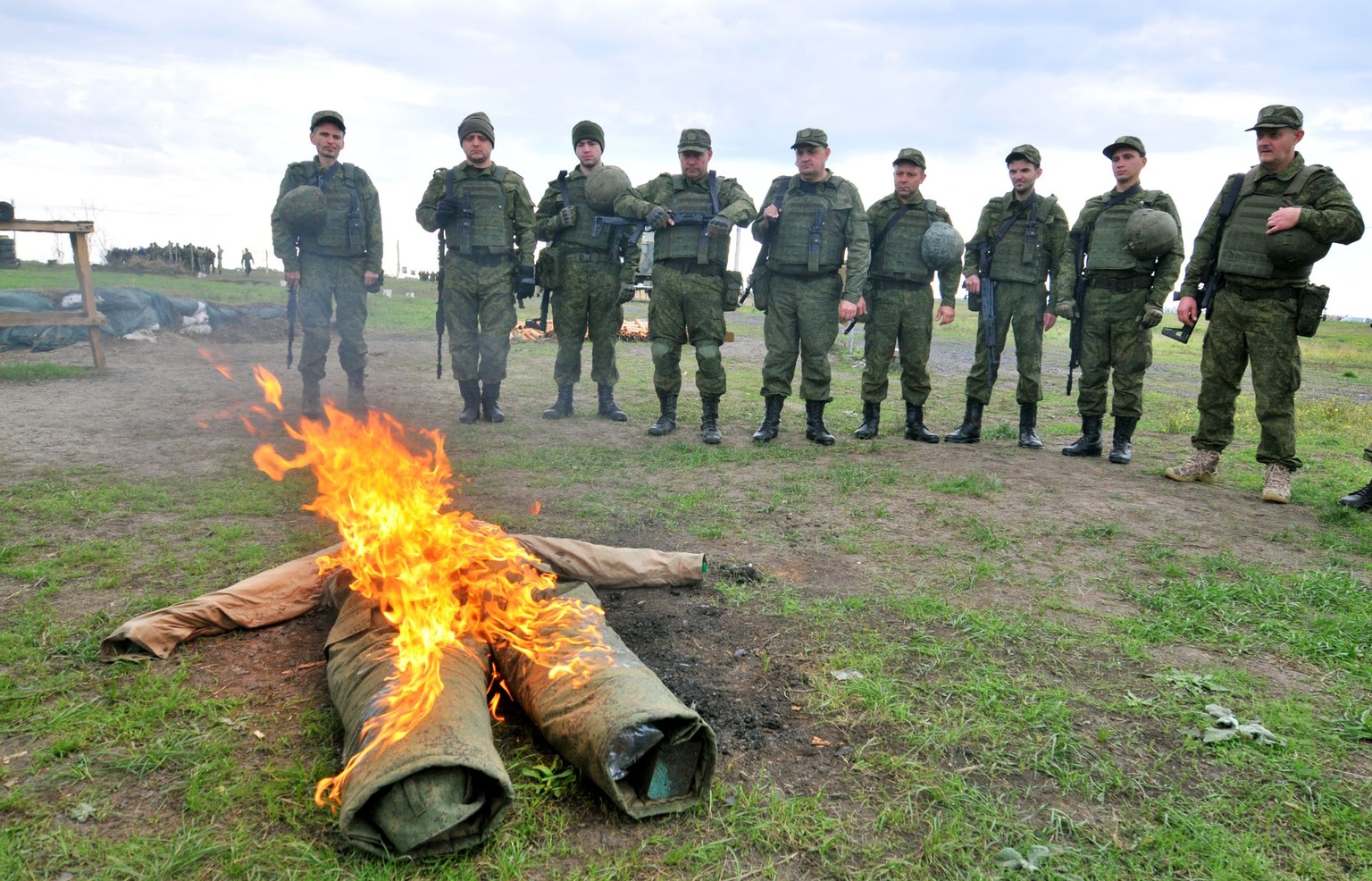
But not all those fighting for Russia were given much of a choice.
Migrants from Central Asia and other countries are another target group. Many are pressured to enlist through the threat of deportation or the loss of Russian citizenship.
Russia has also recruited smaller groups of foreign nationals from countries such as Cuba, Syria, and Nepal through local intermediaries or misleading job offers that later turned into military contracts.
"There’s a lot of coercion. Recruitment sometimes involves abuse, manipulation, or pressure in workplaces to meet quotas. But there’s also a large number of people who willingly sign contracts to fight in Ukraine because of the financial rewards. Money remains central to how the Kremlin sustains its forces," Stepanenko said.
Putin's social contract
Well into the fourth year of its full-scale invasion of Ukraine, Russia continues to sustain a large army without declaring general mobilization or facing mass protests.
"Putin has two overriding priorities — to subjugate Ukraine and to stay in power. When he announced partial mobilization in the fall of 2022, his popularity dropped the most," Max Bergmann, director of the Europe, Russia, and Eurasia program at the Center for Strategic and International Studies (CSIS), told The Kyiv Independent.
"Another mobilization risks provoking backlash not only against the war, but against his rule itself."
To avoid that, the Kremlin promotes the idea that participation in the war is voluntary. It presents those who fight as contract soldiers, rewarded with high pay and other benefits.
"There’s a kind of social contract between Putin and Russian society. Putin will not mobilize the broader Russian society and will pay those who serve, as long as people do not oppose the war," Stepanenko said.
“So far, it has worked — there have been no large-scale protests across Russia."

